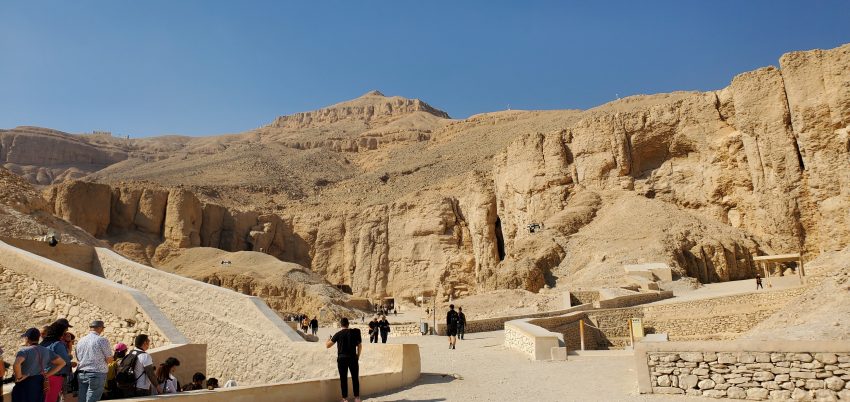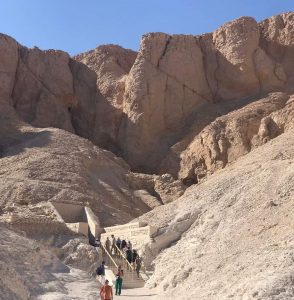 Ancient Egyptian beliefs hold that east is the direction of birth and the west is death. On the second day of our overnight excursion we travelled west across the Nile River to visit the the Valley of the Kings, burial spot to many of ancient Egypt’s best known pharaohs.
Ancient Egyptian beliefs hold that east is the direction of birth and the west is death. On the second day of our overnight excursion we travelled west across the Nile River to visit the the Valley of the Kings, burial spot to many of ancient Egypt’s best known pharaohs.
Valley of the Kings was part of the ancient city of Thebes (now within the modern city of Luxor) and the burial site of almost all the pharaohs of the 18th, 19th, and 20th dynasties (1539–1075 BCE), including the well known King Tut. Located in the hills, the 62 known tombs exhibit variety both in plan and in decoration. For a pharaoh time in the afterlife was far more important than their time on earth. From the time they became rulers most of their resources were focused on finding the proper spot, then building, decorating and filling their tombs.
There are many online resources recommending the best tombs to visit but you will be limited by which ones were open on the day of your visit as flooding is a common concern. Our entry ticket allowed us to enter three. The most famous tomb of the boy king Tutankhamen was an additional cost of US$10.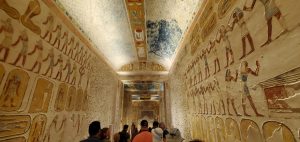
Since King Tut died so young his royal tomb was not finished. Instead he was laid to rest in the tomb of one of his priests. It had little decoration but was stuffed full of all the material wealth he would need in the afterlife when it was discovered by archeologist Howard Carter in November 1922. The mummified body of Tut remains on display in the tomb as requested by the Egyptian government. The tomb itself is somewhat disappointing in comparison to the other tombs we would visit, however you cannot travel that far and not visit King Tut.
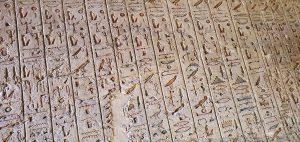
On a busy day we only had time to visit two others, those of King Ramses III and Ramses IV. Both were far larger and beautifully decorated with hieroglyphics and icons detailing the life of the kings, their accomplishments and plans for the afterlife. We were amazed at the brilliant colour that remained on the walls after centuries underground.
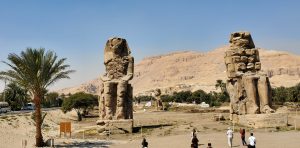
From there we had a photo stop at Hatsheput Temple, recognizable by its row of columns set into the mountainside. Then onto Habu Temple, built by Ramses III and rich with scenes depicting his victories in battle. For a smaller temple it was one of our favourites. Our final stop was the Colossi of Memnon, a mortuary temple guided by two gigantic statues. Although our time was short at these other sites they were no less interesting or grand than the ones before.
Many of the sites we visited are still buzzing with exploration and excavation. Despite the vastness of the sites we were able to visit there are many more known to be nearby but yet to be discovered. That is only one of the many reasons we are hoping to visit Luxor again.
